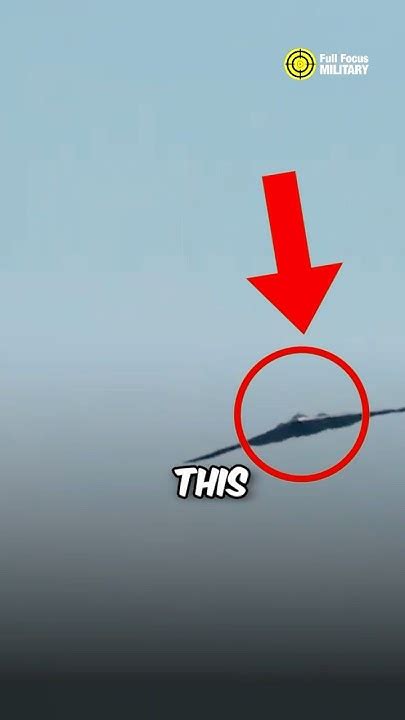
A former chief pilot for OceanGate Expeditions claims he was sidelined after raising concerns about the safety of the Titan submersible, which imploded in June, killing all five people on board. David Lochridge, in court documents and interviews, alleges he was “cut out” of the company’s operations after voicing his concerns about the experimental vessel’s design and testing.
David Lochridge, OceanGate’s former director of marine operations, alleges he was fired after raising serious safety concerns about the Titan submersible, the same vessel that imploded during a dive to the Titanic wreckage in June 2023, killing all five passengers on board. Lochridge’s claims, detailed in court documents from a 2018 lawsuit and subsequent interviews, paint a picture of a company that allegedly prioritized innovation and cost-cutting over safety, leading to potentially catastrophic consequences. His concerns primarily revolved around the Titan’s experimental carbon fiber hull, lack of non-destructive testing, and the viewport’s certification depth.
Lochridge’s employment with OceanGate began in 2015. Initially enthusiastic about the company’s mission to make deep-sea exploration more accessible, his optimism waned as he became increasingly aware of what he perceived as critical safety deficiencies in the Titan’s design and testing protocols. He was responsible for ensuring the safety of all crew and clients during submersible operations. His background included experience as a submersible pilot and a deep-sea diver.
The crux of Lochridge’s concerns centered on the Titan’s hull, constructed of carbon fiber wrapped with titanium endcaps. While carbon fiber offers significant weight advantages, its behavior under immense pressure at extreme depths was, according to Lochridge, not adequately understood. He argued that the hull required rigorous non-destructive testing, such as ultrasonic scans, to detect potential flaws or delamination that could compromise its structural integrity. OceanGate, however, reportedly resisted these tests, citing the lack of readily available equipment capable of effectively scanning the Titan’s thick carbon fiber hull. Lochridge believed this was a critical oversight, potentially masking hidden defects that could lead to catastrophic failure.
In his 2018 report, submitted as part of the lawsuit, Lochridge stated, “I identified numerous issues that posed serious safety concerns regarding the structural integrity of the Titan submersible.” He specifically highlighted the absence of established quality control measures and the reliance on real-time acoustic monitoring to detect hull stress, which he considered an unreliable and inadequate safety measure.
Further compounding his concerns was the Titan’s viewport, the transparent acrylic window that allowed passengers to view the Titanic wreckage. Lochridge claimed the viewport was certified only to a depth of 1,300 meters, significantly less than the Titanic’s depth of 3,800 meters. While OceanGate maintained that the viewport was safe for deeper dives, Lochridge argued that this claim lacked sufficient supporting data and independent verification. He believed operating the Titan at depths exceeding the viewport’s certified limit constituted an unacceptable safety risk.
Lochridge presented his findings and recommendations to OceanGate CEO Stockton Rush, who was among those killed in the Titan implosion. According to court documents, Rush dismissed Lochridge’s concerns, reportedly stating that the company was “willing to take the risk” to achieve its goals. Following this disagreement, Lochridge was reportedly stripped of his responsibilities and ultimately fired in January 2018.
OceanGate sued Lochridge for allegedly breaching his employment contract and disclosing confidential information. Lochridge filed a countersuit, claiming wrongful termination and raising his safety concerns as the primary reason for his dismissal. The lawsuit was ultimately settled out of court, with the terms remaining confidential. However, the court filings brought Lochridge’s safety concerns to light, providing a detailed account of his alleged warnings about the Titan submersible.
Lochridge’s allegations raise serious questions about OceanGate’s safety culture and its approach to risk management. Critics argue that the company prioritized innovation and profit over the safety of its passengers and crew. The Titan tragedy has prompted increased scrutiny of the unregulated nature of deep-sea exploration and the need for stricter safety standards. The U.S. Coast Guard, along with other international agencies, is currently investigating the Titan implosion to determine the root causes and prevent similar tragedies from occurring in the future. The investigation is examining the design, construction, and operation of the Titan, as well as the regulatory framework governing submersible activities.
The implications of Lochridge’s claims extend beyond OceanGate. They highlight the importance of independent oversight and rigorous testing in the development of experimental technologies, particularly in high-risk environments. The tragedy also underscores the ethical responsibility of companies to prioritize safety above all else, even when faced with financial pressures and the allure of innovation. The disaster serves as a stark reminder of the potential consequences of cutting corners and ignoring safety warnings in the pursuit of technological advancement and profit.
Several other individuals and organizations had also raised concerns about the Titan’s safety prior to the implosion. Marine technology experts, industry leaders, and even former OceanGate employees had expressed reservations about the submersible’s experimental design and lack of certification. These warnings, often dismissed or downplayed by OceanGate, add further weight to the argument that the company disregarded well-founded safety concerns.
The Marine Technology Society, a professional organization for marine engineers and technologists, had reportedly warned OceanGate about its “experimental” approach and the potential risks associated with the Titan’s design. In a letter to Stockton Rush, the society expressed concerns that OceanGate’s marketing materials exaggerated the submersible’s capabilities and lacked transparency regarding its safety features.
The Titan tragedy has reignited the debate over the regulation of deep-sea exploration. Currently, there is no single international body responsible for regulating the design, construction, and operation of submersibles. This regulatory vacuum allows companies like OceanGate to operate with minimal oversight, potentially putting passengers and crew at risk. Calls for stricter regulations and independent certification are growing louder in the wake of the disaster. Experts argue that a comprehensive regulatory framework is needed to ensure that all submersibles meet minimum safety standards and that operators are held accountable for their actions.
The families of the Titan victims have also called for accountability and transparency. They have expressed their grief and outrage over the tragedy and have demanded a thorough investigation into the circumstances surrounding the implosion. They hope that the investigation will shed light on the factors that contributed to the disaster and prevent similar tragedies from happening in the future.
The legacy of the Titan disaster will likely be a renewed focus on safety and regulation in the deep-sea exploration industry. The tragedy serves as a cautionary tale about the dangers of unchecked innovation and the importance of prioritizing safety above all else. It is hoped that the lessons learned from this disaster will lead to a safer and more responsible approach to exploring the mysteries of the deep ocean. The event also highlights the inherent risks of extreme tourism and the ethical considerations that must be taken into account when offering such experiences to the public. The balance between adventure and safety remains a critical issue that must be carefully considered as humans continue to push the boundaries of exploration.
The unfolding of events involving OceanGate and the Titan submersible has not only triggered a massive investigation but also amplified conversations around the safety and regulatory aspects of deep-sea explorations, particularly for commercial purposes. It brings to the forefront the critical need for thorough risk assessments, adherence to engineering best practices, and a robust regulatory framework that governs the design, testing, and operational protocols for submersibles. The incident has prompted a reassessment of the existing standards and guidelines, with an emphasis on independent verification and certification to ensure that all vessels meet the required safety criteria before embarking on deep-sea expeditions.
Furthermore, the Titan tragedy underscores the ethical responsibilities of companies operating in high-risk environments. The drive for innovation and profit should never overshadow the paramount importance of human safety and well-being. Companies have a moral obligation to prioritize the safety of their passengers and crew, and to ensure that they are fully informed of the potential risks involved. Transparency and open communication are essential to building trust and ensuring that individuals can make informed decisions about participating in such ventures.
The incident has also brought attention to the role of corporate culture in promoting safety. A safety-conscious culture encourages employees to speak up about potential hazards and concerns without fear of retaliation. It fosters a collaborative environment where safety is a shared responsibility, and where everyone is empowered to contribute to the identification and mitigation of risks. Creating such a culture requires strong leadership, clear communication, and a commitment to continuous improvement.
In addition to the technical and ethical considerations, the Titan tragedy has also raised questions about the psychological aspects of deep-sea exploration. Confined spaces, extreme pressure, and the potential for catastrophic failure can all take a toll on the mental and emotional well-being of passengers and crew. It is essential to provide adequate psychological support and training to individuals participating in such expeditions, to ensure that they are prepared to cope with the challenges they may face. The screening process for passengers should also take into account their psychological suitability for the experience.
The long-term impact of the Titan disaster on the deep-sea exploration industry remains to be seen. However, it is clear that the incident has served as a wake-up call, prompting a re-evaluation of safety practices, regulatory frameworks, and ethical considerations. The industry must learn from this tragedy and take concrete steps to prevent similar incidents from happening in the future. Only by prioritizing safety and fostering a culture of responsibility can the deep-sea exploration industry continue to push the boundaries of human knowledge and understanding while protecting the lives of those who venture into the depths. The incident is also a stark reminder of the unforgiving nature of the ocean and the importance of respecting its power.
The loss of the Titan submersible and its crew has also cast a shadow over the broader field of underwater archaeology and exploration. While the focus has rightly been on the safety aspects of the incident, it is also important to consider the impact on the responsible exploration and preservation of underwater cultural heritage. The Titanic wreckage, in particular, is a site of immense historical and cultural significance, and it is essential that it be treated with respect and care. Any exploration of the site should be conducted in a manner that minimizes disturbance to the wreckage and protects it for future generations.
The Titan tragedy should not deter legitimate scientific research and exploration of the deep ocean. The deep sea is a vast and largely unexplored realm, holding countless secrets about the origins of life, the workings of the planet, and the potential for new discoveries. However, such exploration must be conducted responsibly and ethically, with a focus on safety, environmental protection, and the preservation of cultural heritage. The lessons learned from the Titan disaster can help to guide the development of safer and more responsible practices for deep-sea exploration in the future.
The investigations into the Titan disaster are ongoing, and it is likely that new information will emerge in the coming months and years. It is important to remain open to new evidence and to continue to learn from this tragedy. By understanding the factors that contributed to the disaster, we can take steps to prevent similar incidents from happening in the future and to ensure that deep-sea exploration is conducted in a safe and responsible manner. The legacy of the Titan should be one of learning, adaptation, and a renewed commitment to safety and ethical conduct in all aspects of deep-sea exploration. The disaster is a complex and multifaceted event that requires a comprehensive and nuanced understanding to prevent future tragedies.
The incident has also sparked discussions on the ethical implications of offering extreme adventures to paying customers. The balance between providing unique and thrilling experiences and ensuring the safety of participants is a delicate one. Companies offering such adventures have a responsibility to fully inform their customers of the potential risks involved and to ensure that they are adequately prepared for the challenges they may face. The Titan disaster underscores the importance of transparency and informed consent in the context of extreme tourism. Customers should be fully aware of the potential dangers before embarking on such ventures, and they should have the opportunity to make an informed decision about whether or not to participate.
Furthermore, the incident has raised questions about the role of social media and the media in general in promoting and sensationalizing extreme adventures. While it is important to report on such ventures, it is also important to do so responsibly and to avoid glorifying risk-taking behavior. The media should strive to provide a balanced and accurate portrayal of the potential dangers involved, and to avoid sensationalizing the experiences of those who participate in them. The focus should be on promoting responsible and ethical exploration, rather than on celebrating reckless and dangerous behavior.
The Titan disaster is a tragedy that has touched many lives. It is a reminder of the inherent risks of exploring the deep ocean and the importance of prioritizing safety and ethical conduct in all aspects of such endeavors. By learning from this tragedy, we can take steps to prevent similar incidents from happening in the future and to ensure that deep-sea exploration is conducted in a manner that is both safe and responsible. The legacy of the Titan should be one of increased awareness, improved safety practices, and a renewed commitment to ethical conduct in the exploration of our planet. The event calls for an ongoing dialogue and collaboration among experts, regulators, and the public to ensure that future deep-sea explorations are conducted with the utmost care and responsibility.
Frequently Asked Questions (FAQs)
1. What were David Lochridge’s primary safety concerns about the Titan submersible?
David Lochridge’s main concerns revolved around three key areas: the experimental carbon fiber hull lacking sufficient non-destructive testing, the viewport being certified for a shallower depth than the Titanic wreckage, and the overall absence of established quality control measures. He specifically argued that the carbon fiber hull required thorough ultrasonic scans to detect potential flaws and that relying solely on real-time acoustic monitoring was inadequate. He also claimed the viewport was only certified to 1,300 meters, while the Titanic rests at 3,800 meters.
2. What happened after David Lochridge raised his safety concerns with OceanGate CEO Stockton Rush?
According to court documents and interviews, Stockton Rush reportedly dismissed Lochridge’s concerns, stating that the company was “willing to take the risk” to achieve its goals. Subsequently, Lochridge was stripped of his responsibilities and ultimately fired in January 2018.
3. Was there any legal action taken after Lochridge’s termination?
Yes, OceanGate initially sued Lochridge for allegedly breaching his employment contract and disclosing confidential information. Lochridge then filed a countersuit, claiming wrongful termination and citing his safety concerns as the primary reason for his dismissal. The lawsuit was eventually settled out of court, with the terms remaining confidential.
4. Besides David Lochridge, were there other warnings or concerns raised about the Titan’s safety before the implosion?
Yes, multiple sources raised concerns. The Marine Technology Society reportedly warned OceanGate about its “experimental” approach. Additionally, marine technology experts, industry leaders, and other former OceanGate employees had expressed reservations about the submersible’s design and lack of certification.
5. What is the current status of the investigation into the Titan submersible implosion?
The U.S. Coast Guard, along with other international agencies, is currently conducting an investigation into the Titan implosion. The investigation aims to determine the root causes of the disaster and prevent similar tragedies from occurring in the future. The investigation is examining the design, construction, and operation of the Titan, as well as the regulatory framework governing submersible activities.









